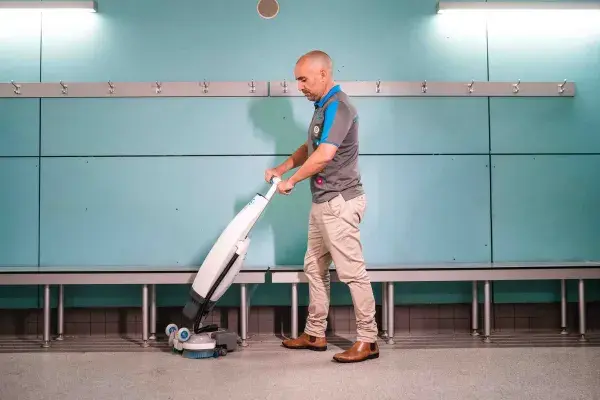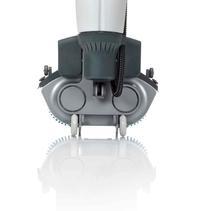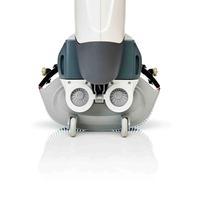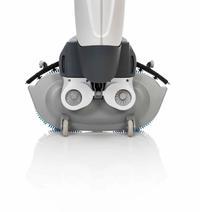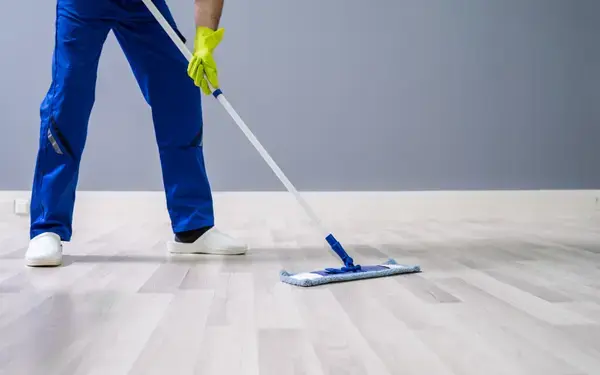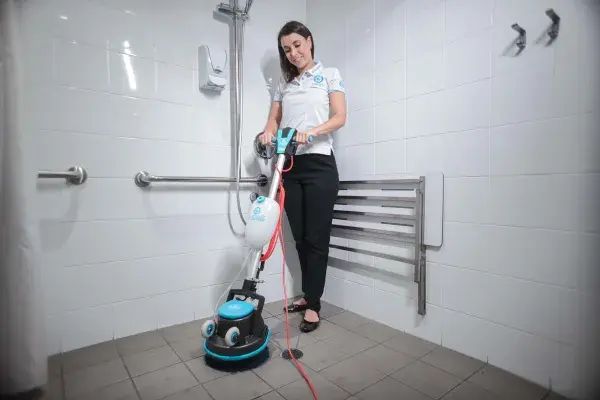You are reading: How to Prevent Slips, Trips, and Falls in the Commercial Cleaning Industry
02 May 2023
6min read time
Brooke Payne
How to Prevent Slips, Trips, and Falls in the Commercial Cleaning Industry
Share:

Key Insights
- One of the leading causes of workplace injury is slipping and falling.
- 70% of these accidents occur on flat/level surfaces.
- The average facility has between 3-9 slip and fall accidents each year.
Picture this: You're walking through a hospital hallway, trying to visit a loved one, when suddenly, you slip and fall on a wet floor. You look around, only to realize there's no sign to indicate that the floor is wet. Sounds scary, doesn't it? Well, this is just one example of how slips, trips, and falls can occur in the commercial cleaning industry. But don't worry, with the right strategies in place, we can prevent these slip hazard accidents.
The cleaning industry is known for its high risk of slips, trips, and fall incidents. This is because of the nature of the work, which involves handling slippery substances like water, soap, and other cleaning chemicals. Workers are also required to work in environments that may be wet, uneven, or cluttered. These factors make it necessary to take preventive measures to avoid accidents that can lead to injuries, downtime, and even lawsuits.

Here are 8 tips to prevent slips, trips, and fall incidents in the commercial cleaning industry::
Training
The first step to preventing slips, trips, and falls is to train your staff on the importance of safety. Ensure that all new employees receive comprehensive training in the safe handling of cleaning chemicals, how to use cleaning equipment, and how to identify and report slip hazards in the workplace. Regular refresher training should also be provided to keep everyone up-to-date with the latest safety standards and protocols.
Use the correct equipment
Using the correct equipment can make all the difference in preventing slips and falls. Slip-resistant footwear is a must-have for workers, as shoes or boots with non-slip soles provide the necessary traction on slippery surfaces. Also consider upgrading to a floor scrubber such as the i-mop instead of relying on the traditional mop and bucket. Not only are they more efficient and effective, but they also drastically reduce dry time from around 6 minutes to just 30 seconds, greatly minimising the risk of slips, trips, and falls. By investing in the right equipment, you can ensure a safer work environment for all.

This graph shows the relative dry times of the i-mop compared to traditional wet mopping.
Get Safe Flooring
Choosing the right flooring can make all the difference in maintaining a safe environment for both employees and customers. A great solution is the i-matt. It can be cleaned in place using floor scrubbers such as the i-mop, and also has a no-trip design. This means it does not ripple or shift from the ground making it easy to maintain safe and hygienic floors. It is an excellent solution for high-traffic locations like the entrances and exits of shopping centers, as well as cold and damp areas such as refrigerated sections in shops where floors are likely to be slippery.
Equipment Maintenance
Regular maintenance of cleaning equipment like vacuum cleaners, buffers, and scrubbers is essential to ensure that they are functioning properly. Faulty equipment can cause accidents, so it's important to have it inspected and serviced regularly. Workers should also be trained in how to properly use the equipment to avoid accidents.
Proper Chemical Handling
Excessive use of cleaning chemicals on floors can leave behind hazardous residues that increase the risk of slips and falls. To prevent such accidents, it's important for workers in the cleaning industry to be trained not only in proper handling, storage, and disposal of chemicals but also in determining the appropriate amount of chemicals needed. One solution to eliminate the risks of chemical overuse is the i-dose system, which guarantees perfect dilution every time. By using this technology, you can avoid guess work and ensure chemicals are being used effectively and safely.
Clear Walkways
Keeping walkways clear of clutter and debris is an essential part of preventing slips, trips, and falls. Make sure that all cleaning supplies, equipment, and tools are stored properly after use. Avoid placing obstacles in walkways and ensure that there is adequate lighting to illuminate potential hazards.
Signage
Use signage to indicate wet floors, areas under maintenance, or any other hazards that may be present. Signs should be visible, clear, and in the appropriate language for the workforce. Signage is a simple but effective way of communicating potential hazards to workers and visitors.
Measure Floor Safety
Measuring floor safety is an important yet often overlooked step in preventing slips and falls. Fortunately, with the slip meter from the i-know kit, predicting the likelihood of these accidents is made easy. This practical and portable device can quickly and accurately measure slip resistance at any location on the floor by determining the coefficient of friction. By measuring the slip and fall risk posed by a floor surface, the slip meter can help identify areas that require extra attention to prevent accidents from happening.
Read: The five benefits of entrance matting

To sum up, preventing slips, trips, and falls in the cleaning industry demands a comprehensive approach that includes staff training, equipment maintenance, clear signage, and more. By adopting these measures, employers can create a safer work environment for their workers, mitigate the risk of accidents that can lead to injuries, downtime, and legal consequences, and ensure the smooth running of their business.
Common Questions Answered
1. What are the most common causes of slips, trips, and falls in commercial cleaning environments?
Answer: Common causes include wet floors from mopping, uneven surfaces, cluttered walkways, inadequate lighting, and improper use of cleaning equipment. Identifying these hazards is crucial to preventing accidents.
2. What safety equipment can help reduce the risk of slips and falls in commercial cleaning?
Answer: Safety equipment such as non-slip shoes, high-visibility vests, warning signs, and floor mats can significantly reduce the risk of slips and falls by enhancing visibility and providing better traction.
3. How important is employee training in preventing workplace accidents?
Answer: Employee training is vital for instilling awareness about safety practices, proper equipment use, and hazard recognition. Regular training sessions can empower staff to maintain a safer work environment.
References
OSHA – Slips, Trips, and Falls
URL: https://www.osha.gov/slips-trips-falls
Safety and Health Magazine – Preventing Slips, Trips, and Falls in the Workplace
URL: https://www.safetyandhealthmagazine.com/articles/19930-preventing-slips-trips-and-falls-in-the-workplace
National Safety Council – Slips, Trips, and Falls Prevention
URL: https://www.nsc.org/home-safety/tools-resources/seasonal-safety/slips-trips-and-falls
Products Featured Inside this Article
Media and Insights
Join the movement that's changing what clean means.
Be part of a cleaner world. Get a live demo at a time that suits you.
Book a Demo